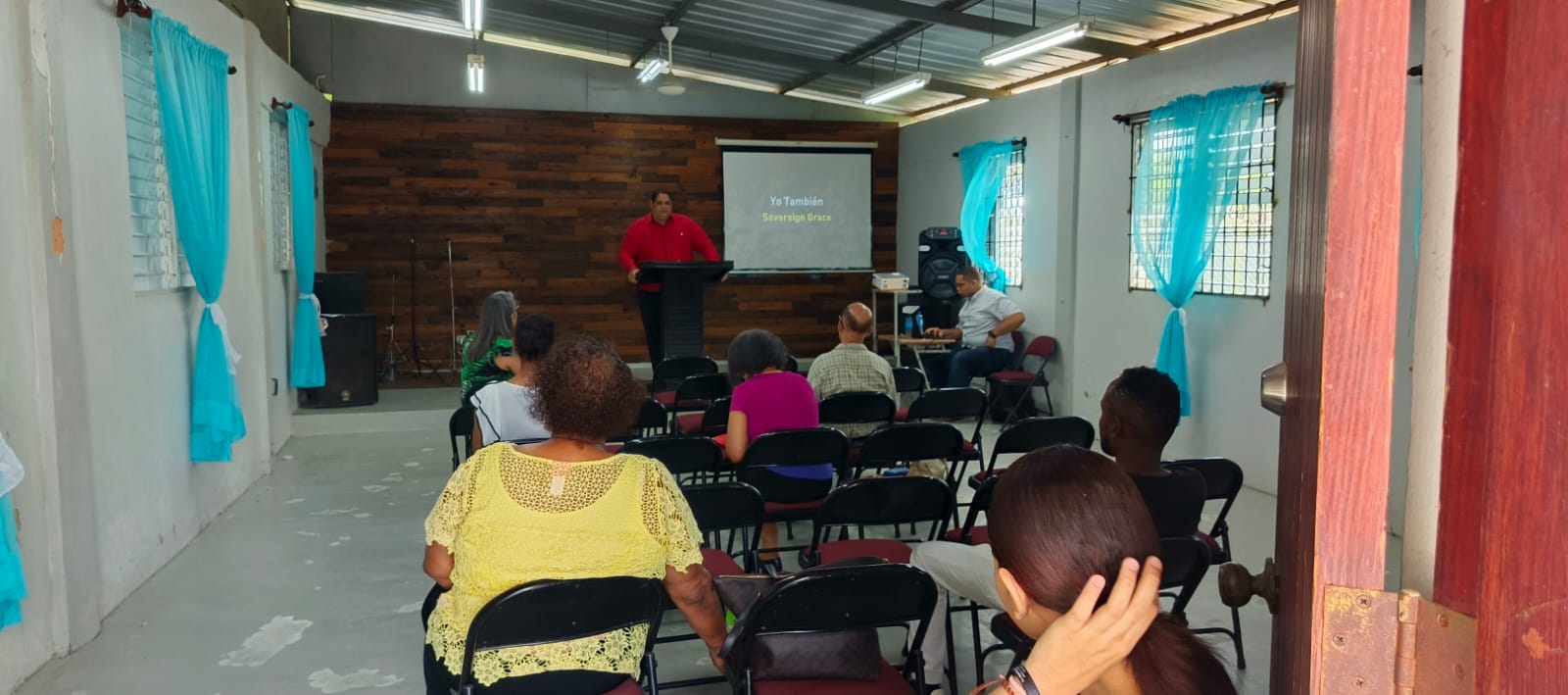An Allegory of Law and Promise: Hagar, Sarah, and the Two Covenants (Galatians 4:21-27)
Main Idea of Galatians:
To defend the gospel of grace as the sole basis for justification and Christian living, to assert the believer’s freedom from legalism through faith in Christ, and to call believers back to the truth of the gospel.
Questions to Consider:
What is Paul’s opening challenge in verse 21 to those who “want to be under the law,” and what might he mean by “don’t you hear the law”?
What key historical details about Abraham’s two sons does Paul highlight in verses 22-23? What is the crucial difference he notes in how each son was born?
Paul states in verse 24 that “These things are being taken figuratively.” What does this tell us about how he intends to use this Old Testament story?
In Paul’s allegory (vv. 24-26), who or what do Hagar and Mount Sinai represent? What is their connection to the “present Jerusalem” and “slavery”?
Conversely, who or what does the “Jerusalem above” represent? What are its characteristics, and who is it “mother” to?
What is the significance of Paul quoting Isaiah 54:1 in verse 27? How does this prophecy of the “childless woman” having many children relate to Sarah and Paul’s argument about the two covenants?
The Text:
“Tell me, you who want to be under the law, don’t you hear the law? For it is written that Abraham had two sons, one by a slave and the other by a free woman. But the one by the slave was born as a result of the flesh, while the one by the free woman was born through promise. These things are being taken figuratively, for the women represent two covenants. One is from Mount Sinai and bears children into slavery—this is Hagar. Now Hagar represents Mount Sinai in Arabia and corresponds to the present Jerusalem, for she is in slavery with her children. But the Jerusalem above is free, and she is our mother. For it is written,
Rejoice, childless woman,
unable to give birth.
Burst into song and shout,
you who are not in labor,
for the children of the desolate woman will be many,
more numerous than those
of the woman who has a husband.“– Galatians 4:21-27 (CSB)
Observations:
Verse 21: Paul directly addresses those who desire to be “under the law,” posing a challenging question: “don’t you hear the law?” implying they are missing its true message.
Verses 22-23: He recalls the scriptural account (from Genesis, part of “the Law”) that Abraham had two sons: one from Hagar, the “slave woman,” who was born “according to the flesh”; the other from Sarah, the “free woman,” who was born “through the promise.”
Verse 24a: Paul explicitly states that “These things are being taken figuratively,” signaling his use of these historical events as an allegory.
Verses 24b-26: He interprets the two women as representing “two covenants.” Hagar is identified with the covenant from “Mount Sinai,” which produces children for “slavery.” He further links Hagar with “Mount Sinai in Arabia” and states that she “corresponds to the present Jerusalem,” which is also “in slavery with her children.” In contrast, “the Jerusalem above is free, and she is our mother.”
Verse 27: Paul quotes Isaiah 54:1, a prophecy calling a “childless woman” (barren, desolate) to rejoice because she will have more children than the woman who has a husband.
Interpretation:
A Direct Challenge: Do You Really Hear the Law? (v. 21): Paul begins this section with a direct challenge to those Galatians captivated by the allure of living “under the law,” as promoted by the Judaizers. His question, “don’t you hear the law?” is rhetorical and carries an edge. He implies that they are either not truly listening to the deeper message of the Old Testament Scriptures or are misunderstanding its ultimate purpose, which, as Paul will argue, points beyond mere legal observance to promise and grace.
The Historical Foundation: Two Sons, Two Mothers, Two Origins (vv. 22-23): Paul grounds his argument in a historical narrative familiar to his Jewish-influenced audience: the story of Abraham’s two sons. He highlights the crucial distinction in their origins. Ishmael, born to Hagar the slave woman, was conceived “according to the flesh”—a result of human planning and natural processes when Abraham and Sarah tried to fulfill God’s promise through their own efforts. Isaac, born to Sarah the free woman, was conceived “through the promise”—a miraculous birth resulting from God’s direct intervention and faithfulness, long after natural means were viable. This distinction, as Moo (BECNT) frequently notes in Pauline thought, sets up the fundamental contrast between reliance on human effort (flesh) and reliance on God’s gracious action (promise).
Unveiling the Allegory: Two Women as Two Covenants (vv. 24-26): Paul explicitly states his interpretive method: “These things are being taken figuratively” (v. 24), meaning he is using the historical account as an allegory to teach a spiritual truth. The two women, Hagar and Sarah, represent “two covenants.”
Hagar, the slave woman, symbolizes the Mosaic Covenant given at “Mount Sinai.” Paul argues that this covenant, when wrongly approached as a system for earning righteousness (as the Judaizers were promoting), “bear[s] children for slavery.” He connects this to the “present Jerusalem” (the earthly city in his day), which, by its reliance on the law for standing with God, was also in a state of spiritual slavery along “with her children” (its adherents).
In stark contrast, Sarah, the free woman, symbolizes the New Covenant of grace, established through God’s promise. Her children are born into freedom. This covenant corresponds to “the Jerusalem above,” the heavenly city of God, the spiritual realm of freedom and promise, which Paul declares “is free, and she is our mother.” Schreiner (ZECNT) would emphasize that Paul is not negating the Old Testament itself but reinterpreting its function in light of Christ, showing that its legal aspects were never intended to be the ultimate means of salvation or the defining characteristic of God’s true people.
The Hope of the Promise: Joy for the “Barren” (v. 27): To support his point about the fruitfulness of the “free woman” (Sarah, representing the covenant of promise), Paul quotes Isaiah 54:1. This prophecy originally addressed barren Israel, promising her future restoration and a multitude of descendants. Paul applies this to Sarah, who was barren for many years yet became the mother of the child of promise. By extension, it speaks to the community of faith—including the largely Gentile Galatians—who, though perhaps considered “barren” or outside the traditional lineage by the Judaizers, are now, through God’s promise in Christ, becoming a vast spiritual family. As Carson (NIVBTSB) might illustrate from other biblical passages, God often delights in bringing forth abundant life and blessings from situations of apparent hopelessness and barrenness, showcasing His sovereign power and grace.
Application:
Listen Deeply to All of Scripture: When you read the Bible, especially the Old Testament law, ask the Holy Spirit to help you “hear” its deeper message, understanding how it points to God’s overarching plan of promise and redemption fulfilled in Christ, rather than just a list of rules.
Distinguish Between Human Effort and Divine Promise: In your walk with God, be aware of the tendency to rely on your own efforts (“according to the flesh”) to gain God’s approval or achieve spiritual growth. Instead, learn to rest and rely on God’s gracious promises and the work of His Spirit.
Embrace Your Heavenly Citizenship and Freedom: Recognize that if you are in Christ, your true spiritual identity and “mother” (source of life and heritage) is the “Jerusalem above,” which is characterized by freedom. Live in light of this heavenly citizenship.
Find Hope in God’s Power to Bring Life: Even in areas of your life or ministry that seem “barren” or unproductive, trust in God’s promise and power. Remember Sarah and the prophecy of Isaiah: God specializes in bringing forth abundant fruit from unexpected places through His grace.
Connection to the Main Idea:
This first part of Paul’s allegory (Galatians 4:21-27) begins to powerfully reinforce his defense of the gospel of grace against the encroaching legalism in Galatia. By contrasting Hagar (representing the law, Sinai, slavery, and the earthly Jerusalem) with Sarah (representing the promise, grace, freedom, and the heavenly Jerusalem), Paul lays the groundwork to show that true children of God belong to the realm of promise and freedom, not to a system of law that ultimately enslaves. This directly challenges the Galatians’ desire to place themselves “under the law.”
How Does This Text Point to Christ?
The “promise” (vv. 23) through which Isaac was born, and which Sarah represents, ultimately finds its complete fulfillment in Jesus Christ. He is the promised Seed of Abraham through whom all nations are blessed. The “Jerusalem above” (v. 26), our free mother, is the spiritual city of God, the new covenant community, made accessible to us through Christ’s redemptive work. The freedom associated with this heavenly Jerusalem is freedom from sin and the condemnation of the law, which Christ alone provides. The joy of the “barren woman” (v. 27) is realized as countless people, including Gentiles, are brought into God’s family through faith in Christ.
Summary:
In Galatians 4:21-27, Paul challenges those tempted by legalism to truly “hear” the deeper message of the law. He begins a profound allegory using Abraham’s two sons: Ishmael, born to Hagar the slave woman “according to the flesh,” and Isaac, born to Sarah the free woman “through the promise.” Paul reveals that Hagar represents the Old Covenant from Sinai, which leads to slavery and corresponds to the earthly, enslaved Jerusalem. In contrast, Sarah represents the New Covenant of grace, and her children belong to the “Jerusalem above,” which is free and is the mother of all believers. He supports this with Isaiah’s prophecy of the barren woman rejoicing with many children, signifying the fruitfulness of God’s promise.
Be Intentional:
This week, when you read Old Testament narratives, try to look beyond the historical events to see if there are deeper spiritual principles or “figurative” meanings that Paul and other New Testament writers might draw out, always testing your interpretations against the clearer revelation in Christ.
Reflect on which “Jerusalem” your heart and actions are more aligned with: the earthly one that might tempt you towards performance and self-effort, or the heavenly one that calls you to live in freedom and reliance on God’s grace?
Ask Yourself:
Am I truly “hearing” what the entirety of Scripture says about salvation, or am I selectively focusing on rules and obligations?
In what areas of my Christian life do I operate more “according to the flesh” (my own strength and understanding) rather than “through the promise” (God’s grace and Spirit-led guidance)?
How does understanding myself as a child of the “Jerusalem above” change my perspective on my identity, my security, and my purpose?
Bibliography:
Carson, D. A. (General Editor). NIV Biblical Theology Study Bible (NIVBTSB). Zondervan.
Merida, Tony & Platt, David. Exalting Jesus in Galatians (CCE) (Christ-Centered Exposition Commentary).
Moo, Douglas J. Galatians (BECNT) (Baker Exegetical Commentary on the New Testament).
Schreiner, Thomas R. Galatians (ZECNT) (Zondervan Exegetical Commentary on the New Testament).
Schreiner, Thomas R. Christ Crucified: A Theology of Galatians.
White, A. Blake. Galatians: A Theological Interpretation (GTI).


